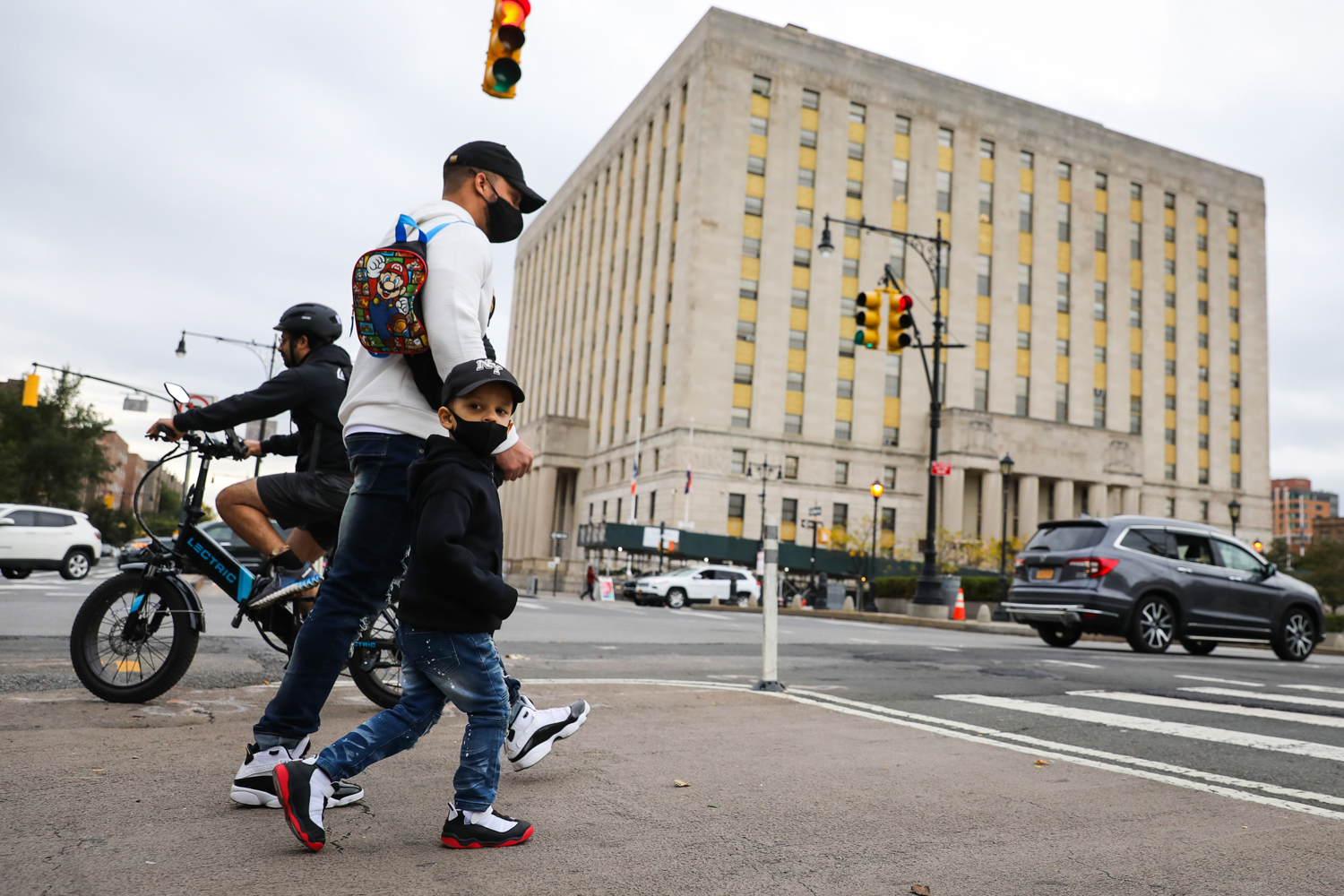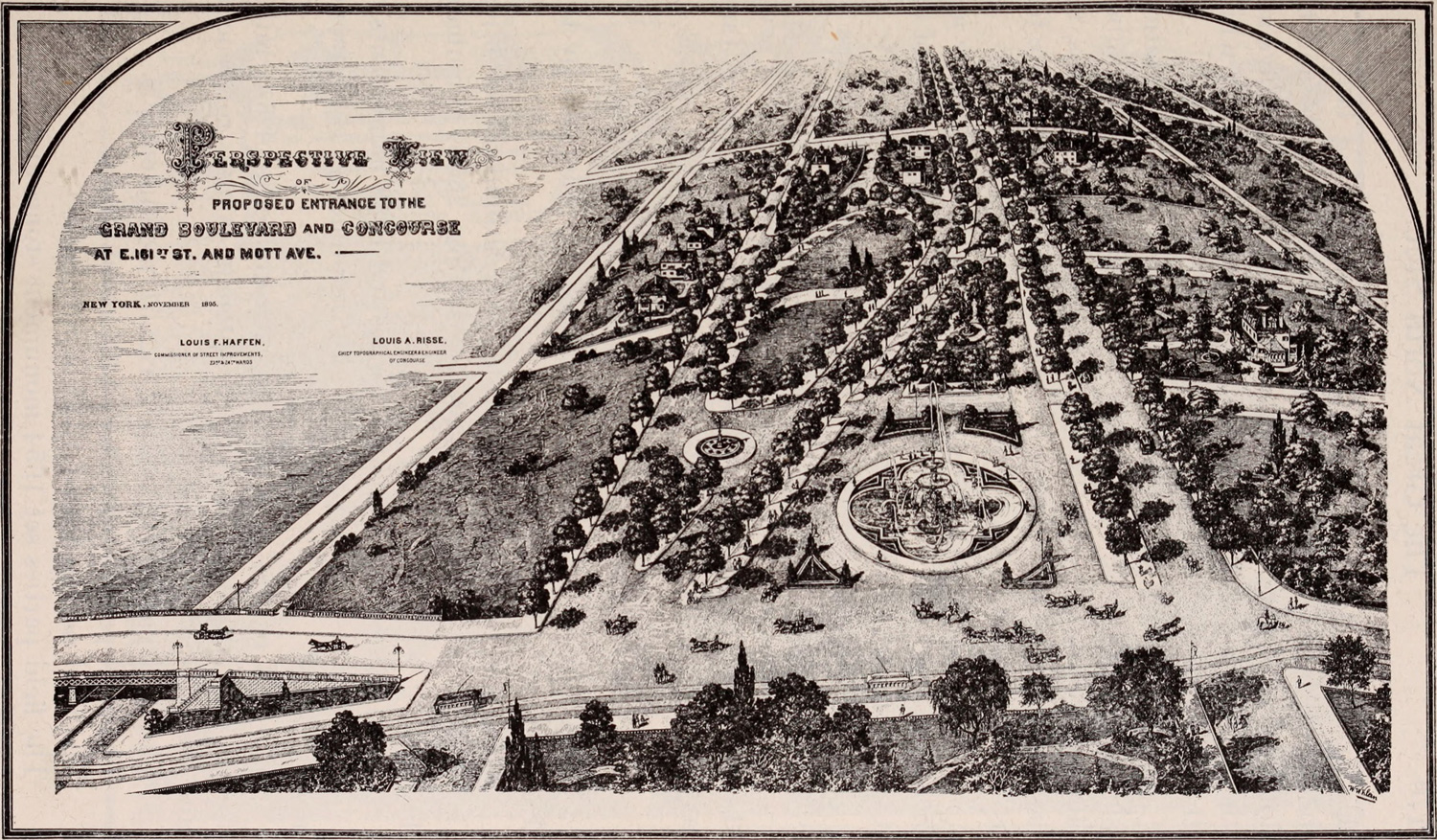
We are celebrating 15 years — and counting — of stories that are deeply researched and deeply felt, that build a historical record of what the city has been.
We are celebrating 15 years — and counting — of stories that are deeply researched and deeply felt, that build a historical record of what the city has been.
The United States is a facing a surge of interest in what has long seemed political anathema: big government. Whether it’s a desire to Build Back Better, or go bold with a Green New Deal, many people would like to see the government do something — to vigorously respond to overlapping Covid, climate, and infrastructure crises. This may be a once-in-century proposition; the last time government played such a large role in shaping American life was during the era of the original New Deal. But more than just an inspiration for today’s debates, the outsize impact of this period is still palpable. From hospitals and housing, to parks and prisons, the public works of the New Deal era often expressed the ideals of a robust government presence in daily life. One particular emblem of those times sits at the corner of the Grand Concourse and 161st Street. Antonio Pacheco navigates the space between the Bronx County Building’s ideologically-charged history and design, and its quotidian functions; between its outward presence along the borough’s “Main Street,” and its sometimes-opaque inner workings.
How does government make itself felt in everyday life? In some ways, government is everywhere: It educates us, delivers our mail, and creates laws meant to keep us safe. It can be insidious, too, when it polices us, regulates our bodies, and builds highways through our neighborhoods. Its presence is often ubiquitous and diffuse, but can also be discrete and singular, taking on a specific, symbolic meaning in the public mind. Whether a grandiose City Hall or a humdrum DMV office, municipal buildings instantiate the idea of government in physical form. They have addresses, are built of bricks and mortar, and serve as workplaces where government business is conducted on a daily basis. But when government is negligent — when it ignores us or lets us down — these buildings can provide a palpable target for our anger. Take the Bronx County Building. Situated along the borough’s broad Grand Concourse, and sandwiched between two large public parks and a wide-open plaza, the hulking, Art Deco-style edifice offers a picture-perfect backdrop for popular expressions of displeasure and resistance.
Known alternately as the Bronx County Courthouse and the Bronx County Building, the structure was officially rechristened the Mario Mertola Building in 1988 to honor a long-serving District Attorney. The building’s multiple identities speak to its varied roles, big and small, in the social and political life of the borough. As the home of the Bronx County Clerk, it’s a place where people can apply for marriage licenses and passports. As the location of the Bronx Civil Supreme Court, it’s also where non-criminal legal cases are adjudicated. The Surrogate’s Court housed within its halls executes wills, while the office of the Bronx Borough President represents the borough’s head of government and sets budgetary, land-use, and strategic planning for the economic development of the Bronx. The borough’s Topographical Bureau, responsible for maintaining official maps and assigning street addresses, is also located in the Bronx County Building, as is the office of the District Attorney. People cast their ballots here on election day; they come here to legally exchange vows; if they want to start a business, they can file paperwork here, too. The Bronx County Building is both an idealized, physical representation — a monument — and a functional, working part of government.
It is no surprise, then, that the building has also become a focal point during times of social unrest and protest. In early 2017, the Muslim and Immigrant Coalition for Justice organized the “March Against Muslim Ban” demonstration to protest the immigration policies of President Donald Trump. Hundreds of Bronxites marched down Grand Concourse to the Bronx County Building and rallied in Lou Gehrig Plaza at the foot of the courthouse. In a televised interview from the event, Aldo Perez of the Coalition told Spectrum News NY1, “The immigrant population is here in this country to build a better America. The ‘Great America’ will come with the immigrant population,” he said, making explicit the group’s efforts to tie together its support for immigrant (and particularly Muslim) communities with the civic identity, both architectural and aspirational, of the United States.
Similar trajectories came together once more on the evening of June 4, 2020, when roughly 300 people marching peacefully on their way to the courthouse in support of the Black Lives Matter movement were violently corralled and attacked by members of the New York Police Department in the nearby neighborhood of Mott Haven. Detailed in a September 2020 report from Human Rights Watch, the widely reported “kettling” incident saw hundreds of protestors, legal observers, and medical personnel brutalized and arrested. The event highlights the Janus-faced nature of government in the South Bronx and communities like it across the United States, where the state is both omnipresent and often at odds with the common good. In the face of certain crises — from the perspective of public health, housing, and economic security — the government is often weak and unsupportive to residents. But when it comes to policing and criminal justice, the government is suddenly vigorous, at-the-ready, and fully prepared to act in accordance with its own interests, particularly when those systems come under direct popular attack.
A conspicuous government architecture reveals an underlying contradiction. Increased visibility promises transparency and accountability, while such prominence can also act as cover for the everyday violence and cruelty inflicted by government on its people. What to make of this split? On the one hand, the Bronx County Building — designed by architects Max Hausle and Joseph H. Freedlander and built between 1931 and 1934 — epitomizes attempts to make government accessible, centralized, and legible in architectural form. On the other, this literal manifestation of government can help obscure the extent of state power.
Rising on the heels of the City Beautiful movement, which sought to imbue civic spaces in American cities with classical monumentality and visual uniformity, the municipal architecture of the 1910s through ‘30s made the work of government outwardly discernable, stacking municipal agencies and services into office towers situated right along “Main Street.” These consolidated, multi-functional buildings could house entire city departments, or even the entirety of city government, granting it an iconic status rivaling that of churches and the high-rise “Cathedrals of Commerce” of the Gilded Age. Following the 1898 consolidation of Manhattan with its surrounding boroughs, New York City built the Manhattan Municipal Building — a 40-story, 580-foot tall structure completed in 1914 and designed by McKim, Mead, & White — to house many of the city’s administrative departments. In subsequent decades, municipalities as far-flung as Los Angeles (1928), Buffalo (1931), and Kansas City (1937) built new city halls of their own, abandoning smaller clusters of government buildings for towers that brought together soaring urban bureaucracies under a single roof.
While the Manhattan Municipal Building rises above a dense administrative district containing block after block of government offices, the Bronx County Building was designed as a civic center unto itself, embedded within a diverse mix of residential, commercial, and entertainment venues where public, pseudo-public, and private spaces came together to create a new neighborhood. The building was completed just one year after the new Independent Subway System’s Concourse Line began operation; it also followed on the heels of the completion of the Concourse Plaza Hotel and Yankee Stadium in 1922 and 1923, respectively, and the opening of Loew’s Paradise theater in 1929. Together, this ensemble complemented the scale and grandeur of the Grand Concourse itself: Modeled after the Champs-Élysées in Paris and designed for carriages, cars, bicycles, and pedestrian promenading, this multimodal throughfare was an alternative to the dense, congested streets of 19th-century Manhattan. During the early decades of the 20th century, the neighborhood surrounding the building became a growing middle-class area where German and Italian immigrants from Manhattan could find more ample space. As a relatively new neighborhood, it exhibited some of the architectural reforms of previous generations at the district scale. Wide streets complemented New Law tenements with entry courtyards and broken massing that provided access to light, air, and recreational space while representing the possibilities of modern planning and design at the time.
Since 1897, the Bronx Borough Hall had been located in a stand-alone, three-story building several miles to the northeast of the current building, while the borough’s courthouse was in a structure of its own one mile to the east on 161st Street. Both institutions were far removed from the explosive energy of the Grand Concourse, with its direct connections to Manhattan and growing, upwardly mobile populations. While the newly consolidated Bronx County Building allowed municipal planners to put vital government services at residents’ doorsteps, its creation was more than just a practical matter. The design and construction of the building took place amid a backdrop of political reforms under the leadership of Franklin Delano Roosevelt. First as Governor of New York State, and later as President of the United States, Roosevelt undertook a vigorous effort to modernize government by stamping out a culture of ingrained political corruption. The new building’s public visibility contrasted sharply with the backroom dealings and palm-greasing of the electoral machines that long held sway over political and social life in New York — a testament to a conceptual shift that embraced government’s responsibility to its citizens and, in turn, expected, if not required, that government itself would be run fairly and in the common interest. With its unified bureaucratic offices, artworks, publicly accessible lobby, and prominent siting, the courthouse conveys this ideal in a way that dispersed, stodgy municipal offices never could.
The federal government responded to the first years of the Great Depression with an absence of action. Although President Herbert Hoover supported limited public works, he left responsibility for recovery solely within the realm of the private sector. Hoover promoted volunteerism and charity while staunchly refusing to utilize federal powers to coordinate these efforts, lest socialism take root. However, in 1931, Governor Roosevelt created the Temporary Emergency Relief Administration (TERA), a program for urgent unemployment assistance that also pushed a reconsideration of New York State’s role in the welfare of its citizens. Rather than simply putting impoverished people on “the dole,” as Hoover had feared, TERA put New York residents to work, providing them wages in return for their labor. The legislation also cemented critical labor reforms, including the establishment of a five-day workweek for public works projects, the prohibition of “discrimination on account of race, color, non-citizenship, or political connections,” and the provision of workmen’s compensation insurance for relief workers. Ultimately, some of the spirit of creative legislative reform established by TERA was taken up by later New Deal programs, including the Federal Emergency Relief Administration (FERA), Civil Works Administration (CWA), Public Works Administration (PWA), and Works Progress Administration (WPA). Several of these programs funded the completion of the courthouse, which was still under construction when Roosevelt left the Governor’s office for the White House in 1932.
Created under the reformed auspices of both local and national Depression relief programs, the building’s status as a consummate public works project is reinforced by the visual rhetoric of the architecture itself. The building plays a central role in Tom Wolfe’s 1987 satire Bonfire of the Vanities, where its courtrooms host the book’s cringeworthy legal drama, and its decorative program stands in for the “open-faced optimism” of Rooseveltian reformers. In the novel, an assistant DA describes the courthouse’s “four great façades” as “absolute jubilations of sculpture and bas-relief. There were groups of classical figures at every corner. Agriculture, Commerce, Industry, Religion, and the Arts, Justice, Government, Law and Order, and the Rights of Man — noble Romans wearing togas in the Bronx! Such a golden dream of an Apollonian future!”
The building’s statuary creates an idealized view of government, relying on visual and intellectual connections between ancient forms of government and the democratic republic of the United States. Similarly, heroic narrative frieze panels wrapping the exterior of the building, created by the sculptor Charles Keck, along with monumental interior murals by James Monroe Hewlett, foster associations between the building, the judicial institutions of the Bronx, and foundational elements of the nation’s colonial history. Taken together, these features imbue the building with a potent symbolic power, and anchor the courthouse as a bastion of law and order in the community.
It is ironic then, that the building’s very construction was embroiled in corruption. An article in The Daily Brooklyn Eagle from January 21, 1932 points out that New York Public Works Commissioner William J. Flynn was subpoenaed in response to inquiries from the Hofstadter Committee, a legislative group formed by Governor Roosevelt to investigate municipal corruption. The probe discovered that Flynn forced the building’s contractor, the William Kennedy Construction Company, to break an existing contract with a gravel company so that it might instead contract with a company favored by Flynn. According to the article, Flynn threatened to foist the regulatory powers of the municipality on Kennedy Construction if it did not cooperate, stating that “every load of sand will be measured and tested and you will never get the contract completed.” The Kennedy firm denied receiving pressure over the contract, and both Kennedy and Flynn considered the inquiry baseless. Eventually, the courthouse was completed, but the corruption episode highlights the degree to which the reforms of the Roosevelt era faced a deeply entrenched, and often unscrupulous political culture.
The Hofstadter Committee would also expose massive corruption within the city’s criminal justice system, including a network of bribery orchestrated between police officers, attorneys, and judges which targeted mostly working-class women with extortion by framing them for crimes they did not commit. Decades later, in 1985, Mario Mertola (the building’s namesake District Attorney) moved to indict police officer Stephen Sullivan with a charge of second-degree manslaughter in the shooting death of Eleanor Bumpurs, a 66-year-old Black woman killed during a forced eviction. Mertola’s indictment was dismissed by a State Supreme Court judge, and Sullivan was eventually acquitted. The 2020 Mott Haven kettling attack is only the most recent episode in a long line of unaccountable violent police actions abetted by the machinations of a criminal justice system that, despite taking place in full view of the public, ultimately remains discretionary and opaque.
The Bronx County Building’s basement jail — where glazed brick walls, concrete floors, and iron bars come together to create a stark manifestation of government power and discretion — sits out of view as well. Built as a temporary holding facility, the spacious, clean-lined jail is lit from one end by a pair of windows that look up into a courtyard, while its cells were hygienic and humane improvements over those of earlier jails like the dark and cramped Manhattan facility known colloquially as “The Tombs.” For all the progress inherent in Roosevelt’s political reforms, jails and prisons represent a significant proportion of the public works projects undertaken by state and federal authorities during the New Deal era, bringing to bear a vast expansion of the nation’s carceral infrastructure. The Bronx County Building’s architect, for example, went on to design the new Bronx House of Detention for Men nearby: a 350-cell, Egyptian Revival-style jail designed to the latest standards, including cell doors with “a microphone connection for communication,” added so that the only reason detainees would ever have to leave their detention wing would be to “go to court.” Like the courthouse basement, this massive pre-trial jail was surely an improvement on previous models. But by the 1970s, the House of Detention held over 1,000 inmates in dilapidated and, once again, inhumane conditions. Demolished in 2005, it is likely to be replaced with one of the City’s four, planned borough-based jails.
Nearly 100 years after their construction, the courthouse’s jail cells have continued to see use. In fact, it is quite likely that at least some of the demonstrators ensnared by the Mott Haven kettling operation did ultimately make it to the Bronx County Building, not as protesters but as detainees. They are unlikely to be the last. How will government register in their everyday? For some, government is a place of work, for others, a place of punishment. It is a force of accountability and one of opacity. It holds corruption to account and kettles peaceful protest. It registers birth and marks death, officiates marriage and sanctions business. In short, government is everything, and that is what makes it ours.
This essay was produced with support of the Goethe-Institut New York in conjunction with the series Democracy Will Win: What Spaces Are We Fighting For?

The views expressed here are those of the authors only and do not reflect the position of The Architectural League of New York.

